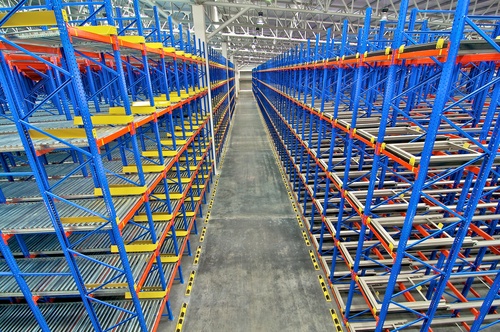Having a proper inventory counting schedule is one of the most important elements of inventory management. Cycle counting is an advanced, fluid form of inventory counting that offers greater insight into your inventory by continuously tracking and updating data throughout the year. It results in more consistency than an annual or bi-annual counting system and costs substantially less in terms of downtime and disruption.
Reid Curley

Recent Posts
Cycle Counting Is Key to Inventory Management
Topics: Cycle Counting
Warehouse Efficiency Software: Labor Management Systems (LMS)
After investing in a Warehouse Management System to track inventory and drive warehouse processes, another type of warehouse efficiency software that companies use is a Labor Management System. A LMS has different labor costing and productivity functions. Warehousing is a very labor intensive operation that relies heavily on perfect staffing to achieve great results. Software developers have been quick to develop programs that specifically manage and track labor metrics and provide insight into overall warehouse efficiency.
Topics: warehouse efficiency software
Warehouse Efficiency Software: 8 Metrics to Consider
Your warehouse efficiency software is capable of generating hundreds of complex metrics in real time, but it's up to you to tell it which ones you really want to see. When it comes to getting real answers about how well your organization is running, you need to dig deeper than the surface level metrics that everyone else uses. Here are a few additional metrics to consider:
Topics: warehouse efficiency software
Warehouse Efficiency: KPIs for an Effective Operation
When it comes to warehouse efficiency, we often think in loose, global terms. Everybody wants to run a more efficient warehouse, but we rarely think about the calculations that actually make up the warehouse efficiency picture. Boosting your warehouse efficiency requires more than just a vague idea about tightening up sloppy processes. It means deciding on a few Key Performance Indicators (KPIs) that can be measured and tested month after month for effectiveness.
Topics: warehouse efficiency
Warehouse Efficiency: Improving Real-Time Inventory Control
Of all the ways to improve your warehouse efficiency, one of the most effective ways to drive change is through real-time inventory control. Real-time inventory control provides for greater transparency throughout your organization. It can be used for both internal and external products to protect your bottom line.
Topics: warehouse efficiency
Warehouse Productivity: Moving up Not out
What do you do when your product catalog is expanding, but your warehouse remains the same size? Many companies immediately begin looking for a larger warehouse or plan on building out a second building on their site to accommodate the new products. We're here to tell you that building up may be far more economical than building out. Here's why:
Topics: warehouse productivity
Improving Order Picking for Greater Warehouse Productivity
Which elements of your picking system lend themselves to greater warehouse productivity? While many people believe that simply picking faster is the answer to improved productivity, the truth is that there are a variety of factors that can influence your overall performance. Here are a few tips that will help you drive continuous improvement in your warehouse.
Topics: warehouse productivity
Is Warehouse Replenishment a Waste of Resources?
There seems to be an ongoing debate about whether or not warehouse replenishment strategies that break down bulk quantities of certain items and move them to more accessible locations are actually worthwhile, or if they simply over-complicate a process and add labor. It turns out that warehouse replenishment really does work, and it reduces the amount of time it takes to get orders out the door. Here's a breakdown of why warehouse replenishment actually saves you resources.
Topics: warehouse replenishment
Warehouse Replenishment: Determining How and When
There are several ways to approach warehouse replenishment. The traffic on your floor, the size of your team, and the volume of the products you are restocking all play a part in deciding which system is best suited to your needs. You can replenish on demand, or you can replenish using a more opportunistic approach. Here are a few things to consider about how and when you do your warehouse replenishment:
Topics: warehouse replenishment
4 Facts to Know About Day or Wave Replenishment
Many warehouses have adopted the wave model for picking where multiple orders are batched together and released for picking as a single group (the "wave") instead of being released piecemeal. Fewer warehouses have used the wave model for replenishment though. Some warehouse managers debate the pros and cons of wave replenishment. On the one hand, it appears to offer a useful means of labor consolidation, but on the other hand, there is some question as to whether or not it is really relevant with modern real-time order processing. Here's what you need to know:
Topics: warehouse replenishment












